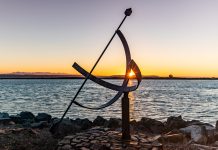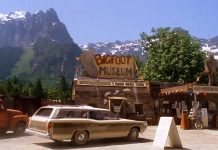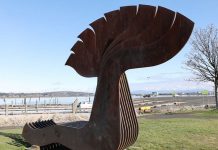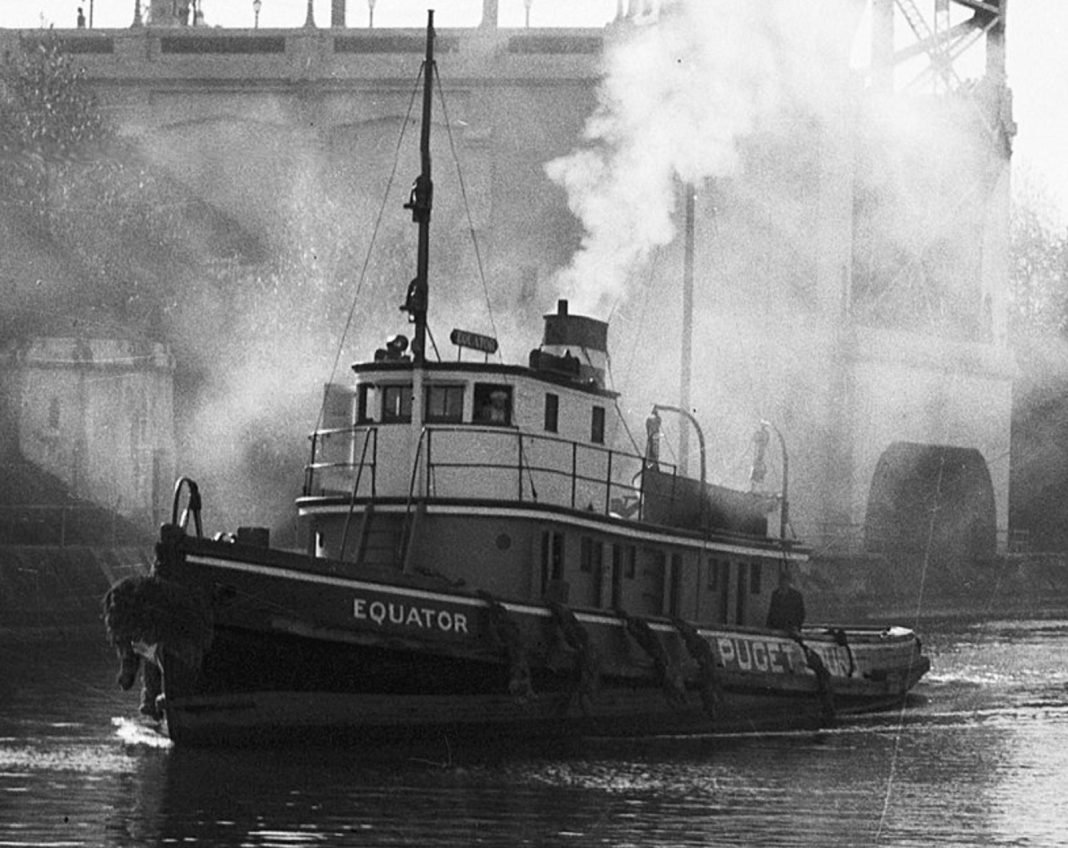If you’ve had the chance to visit the Port of Everett Boat Launch, you might have come across a sizable antique wooden ship sheltered beneath a canopy. What meets your gaze is none other than the tranquil abode of the renowned schooner, the Equator. This maritime marvel has traversed the globe, weaving a tapestry of tales within the fabric of Everett’s history.
Once a vessel that bore the illustrious writer Robert Louis Stevenson on his South Pacific escapades, it now resides at the boat launch, invoking images of pirates, X’s that mark the spot, buried treasure, and all the fun of the historic times when many explorers used to sail the high seas in search of adventure.
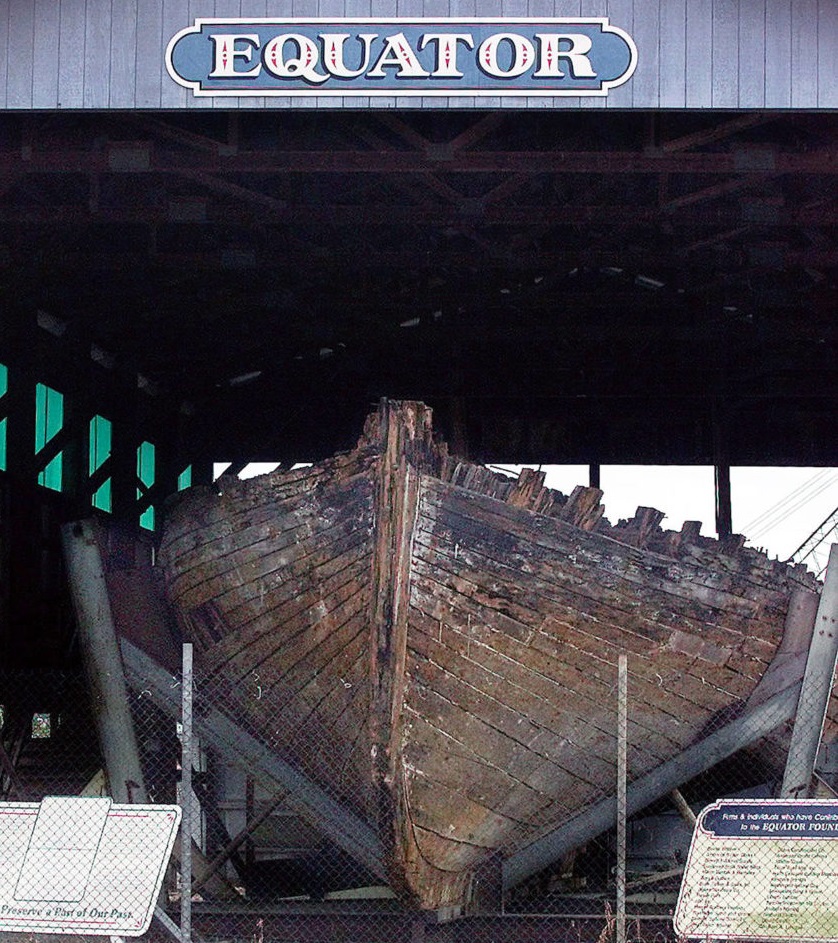
The Creation of the Equator and Early Years of Service
The Equator was meticulously crafted in 1888 in Benicia, California, as a two-masted schooner by boat builder Matthew Turner, who had a reputation for designing massive wooden ships, having previously built over 200 vessels. Its purpose was clear: to navigate the copra trade routes of the South Seas with finesse and reliability.
In 1889, the ship played host to Robert Louis Stevenson and Fanny Vandegrift Stevenson, who chartered the vessel in Hawaii for an extensive journey across the South Pacific. This maritime escapade proved transformative for Stevenson as he traveled from Honolulu to the Gilbert Islands, immersing him in the intricacies of ocean life that would later find echoes in his literary creations “Treasure Island” and “The Wrecker.” As the Equator ventured forth, it carried Stevenson toward the distant shores of Samoa, where he eventually established his residence, cementing an enduring connection between the vessel and his legacy.
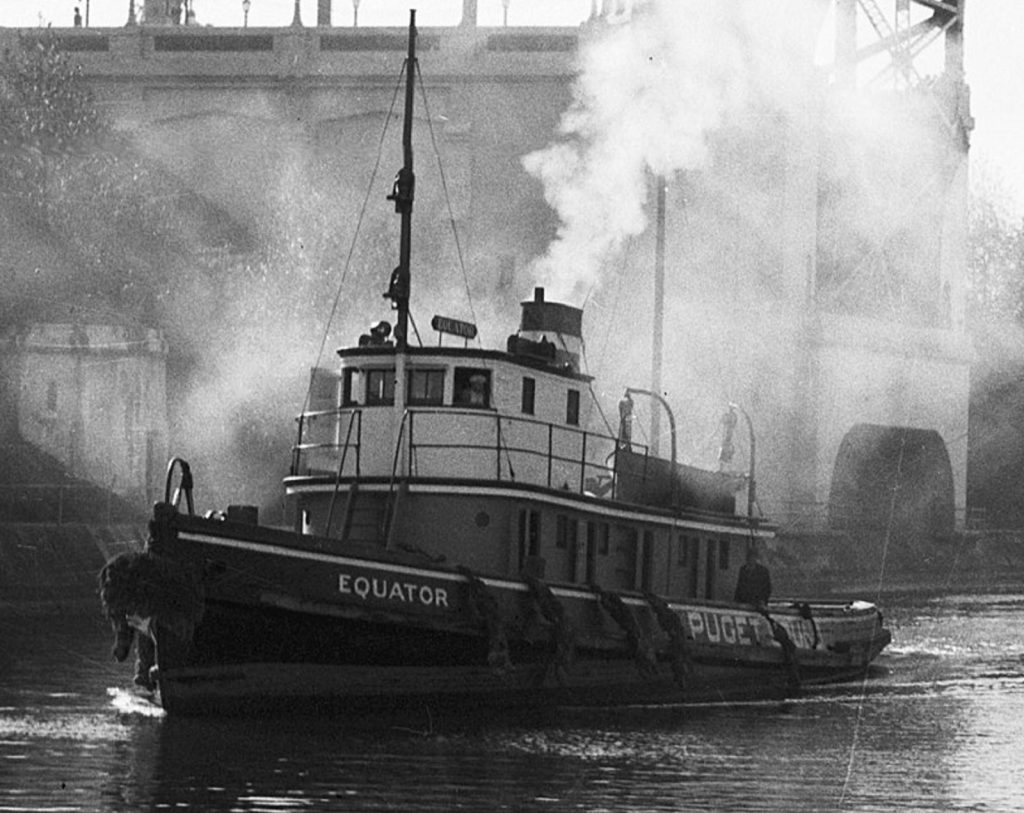
The Equator Propels Forward Toward New Adventures
In the unfolding timeline of the 1890s, the Equator underwent a transformation, receiving the heart of a steam engine that would propel it into new roles. Earning its keep as a tender, it served in the Arctic whaling fleet or partook in fishing endeavors off the Alaskan coasts — exact records have blurred these distinctions. A subsequent chapter saw the Equator undergo enlargement, albeit at the cost of its bowsprit when the vessel was acquired by Carey-Davis Co. in 1915. During this phase of its journey, it served as an integral part of the Coast and Geodetic Survey organization’s operations, tending to its vital tasks as a wire drag vessel.
The 1920s ushered in a new era for the Equator, one marked by the conversion to gasoline engines, a modernization endeavor that infused the vessel with renewed vigor. However, 1923 spelled a different fate as the Equator found itself stranded on the Quillayute Bar, its path impeded by nature’s challenges as it ran aground.
Amidst varying accounts, the ship’s evolution into a tugboat is surrounded by uncertainty, with possible dates ranging from 1916, 1923, to 1941. In a significant revival, 1923 bore witness to comprehensive renovation, a transformation that culminated in the installation of a diesel engine in 1941.
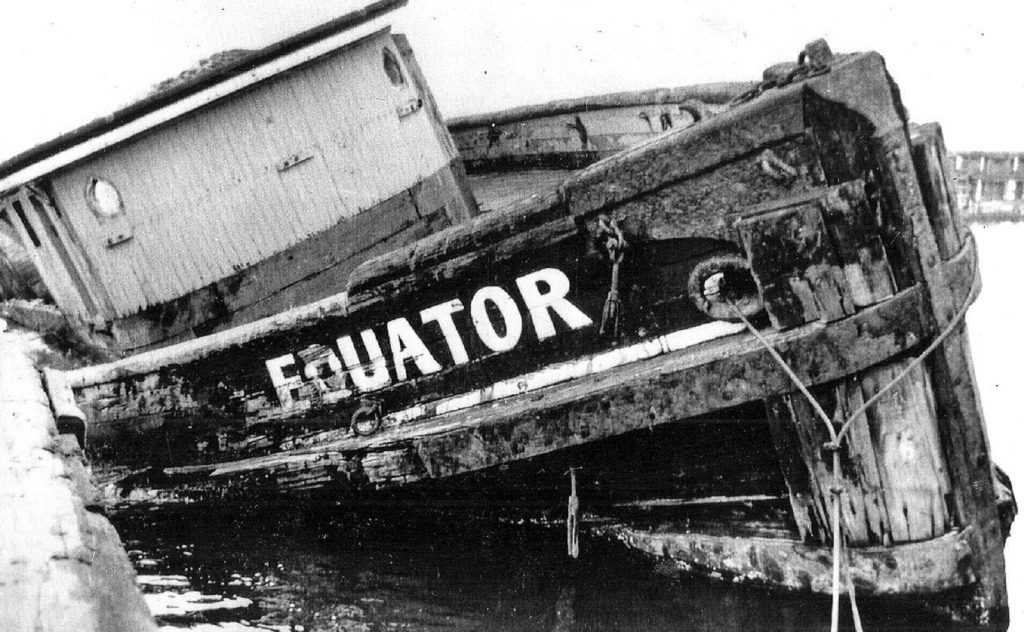
The Equator is Lost and Nearly Forgotten Upon Retirement
The final leg of the Equator’s maritime odyssey saw it serve dutifully as a tugboat, navigating the waters of the Puget Sound, until the year 1956. During this time, the ship’s fate took a somber turn, as it found itself abandoned on the shores of Jetty Island, just outside the harbor of Everett, where it was put to use as part of the city’s wooden ship breakwater.
A series of ships had been intentionally sunk along the shoreline in the 1930s at the mouth of the Snohomish River to create the breakwater. By the late 1940s, it was common to sink old barges off the island’s northern end to provide this breakwater in the harbor. Bereft of human stewardship, the Equator found itself among other discarded vessels, silently witnessing the passage of eleven years and seemingly forgotten before being rediscovered.
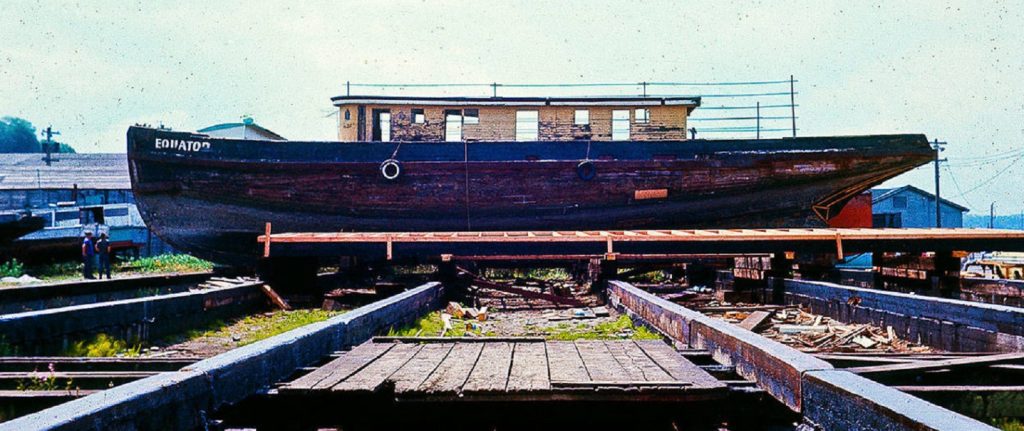
The Equator is Removed From the Breakwater and Attempts Are Made to Restore the Ship
In the 1960s, the initial endeavor to safeguard the Equator was spearheaded by Eldon Schalka, a dedicated Everett dentist. Overcoming obstacles, Schalka successfully rallied a group of volunteers from the Everett Kiwanis Club. In an inspiring display of collective effort, the team hauled the vessel ashore and diligently cleansed it of the accumulated muck in June 1967.
Following this valiant endeavor, the Equator found herself cradled within the protective embrace of the 14th Street Fisherman’s Boat Shop in Everett. During this dry-dock, the vessel awaited the next chapter of her revival.
It would be here the ship would remain until a significant turning point arrived on February 21, 1968, when the National Register of Historic Places conducted a comprehensive survey. This evaluation yielded a meticulous description of the ship’s state at that juncture, along with insightful recommendations aimed at guiding its restoration journey.
From there, Schalka took on the role of establishing a nonprofit endeavor aimed at the vessel’s restoration. Despite little fundraising success, Schalka managed to get the Equator listed on the National Register of Historic Places on April 14, 1972. It was the first Everett property to receive the designation.
Despite Schalka’s dedication, the foundation ultimately tried but failed to raise enough money to restore the vessel, which eventually became an eyesore for the local community. Subsequently, by the late 1980s, the Equator had been reduced to a crumbling hull and was moved to its present location at the corner of 10th Street and Craftsman Way. Schalka’s foundation for the historic vessel was finally dissolved after his death in 1992.
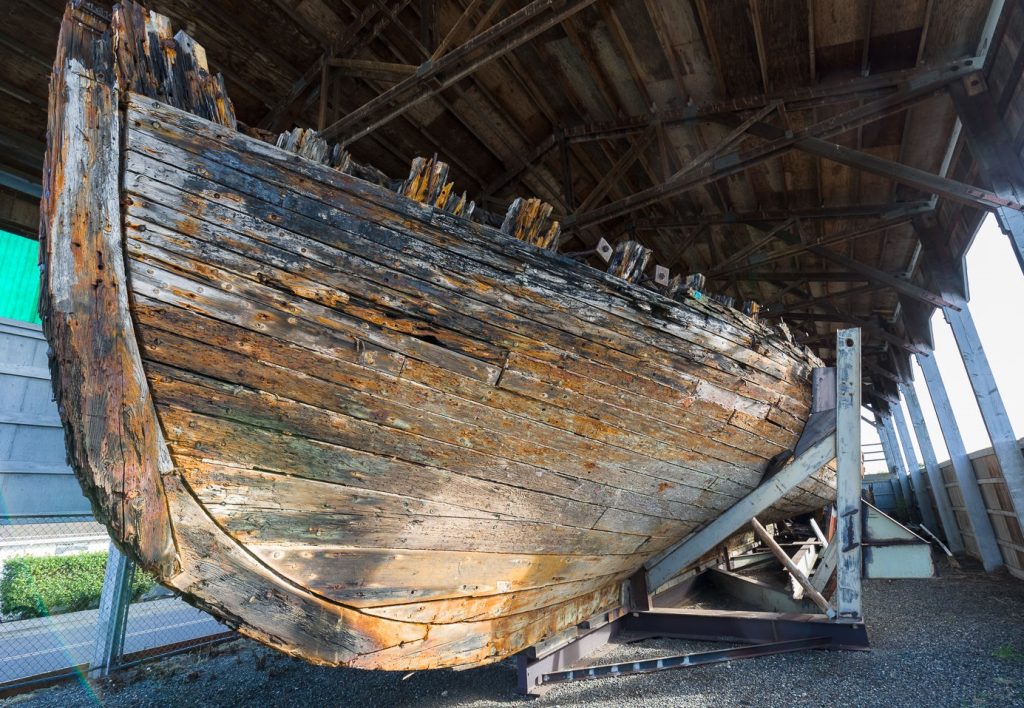
The Equator Walks the Proverbial Plank as Plans Are Made to Dismantle
Initially, the Equator found shelter beneath an improvised structure that left it exposed on all sides, vulnerable to the elements’ relentless influence. This precarious state took a dire turn in November 2017 when the ship’s rear section collapsed, prompting the Port of Everett to encase the shelter to shield the schooner from further deterioration. Despite these efforts, the Equator remains in a fragile condition. Notably, it cannot be relocated or preserved in its current state, further complicated by its status as an “orphan” vessel, lacking a legal owner to advocate for its care.
In response to this complex scenario, the Port of Everett acted decisively by issuing a notice outlining its intention to assume custody of the ship. Notices were affixed to both sides of the bow, setting stringent conditions for any prospective owner seeking to claim the vessel. To regain ownership, they would need to step forward by May 29, 2022, furnish proof of ownership, facilitate the relocation of the ship to an authorized anchorage area, moorage facility, or storage location, and assume financial responsibility for salvage costs, storage fees, and associated expenses.
In line with this course of action, the Port of Everett took possession of the Equator and unveiled plans for its disassembly. The ship’s timber, once the backbone of maritime history, is slated to find new life through public art and an interpretive exhibit. The significance of this endeavor is underscored by the involvement of nautical archaeologists, including students from Texas A&M University, who embarked on the documentation of the ship’s remains in June 2023.
This meticulous process is a prelude to the forthcoming dismantling, signaling a new chapter in the Equator’s storied legacy as it set sails for the last time with a life spanning sailing, steam and diesel engines, and soon, historical works of art.


